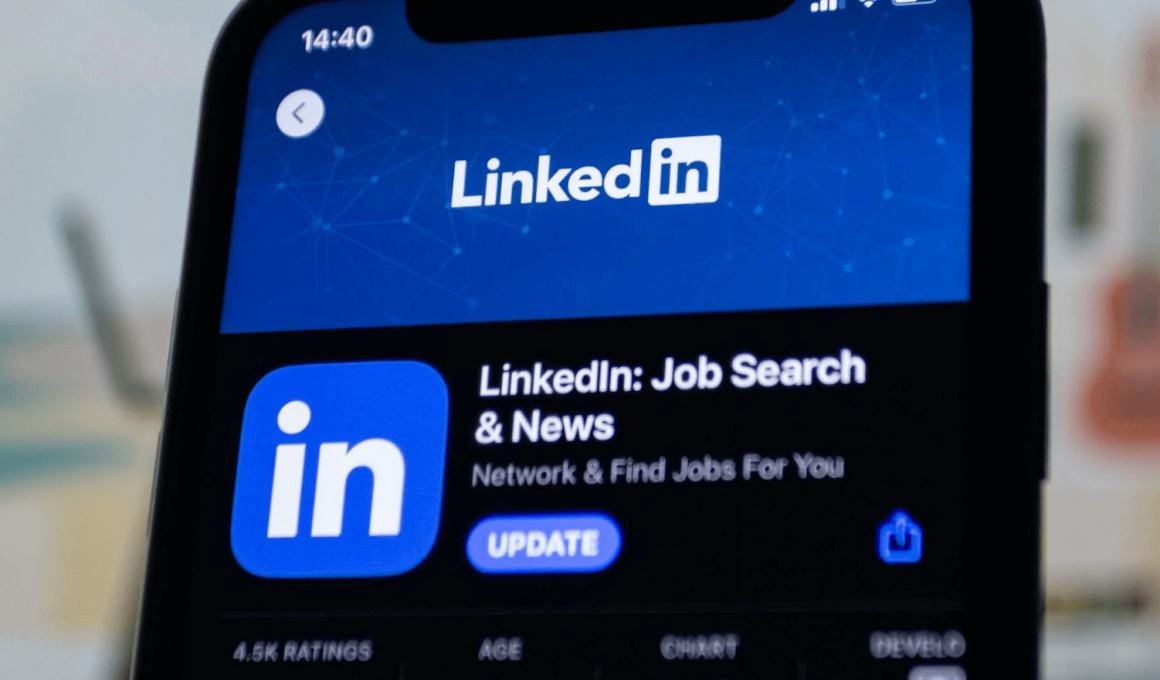Are you looking to make the most of your LinkedIn profile when applying for an internship? With the right steps and some dedication, you can turn your profile into a powerful tool that will increase your chances of getting noticed. In this article, we’ll provide a step-by-step guide on how to maximize your LinkedIn profile when applying for internships.
Introduction
When it comes to applying for internships, your LinkedIn profile is one of the most important tools in your arsenal. Here’s a step-by-step guide on how to maximize your LinkedIn profile so you can land the internship of your dreams:
1. Start with a strong headline.
Your headline is one of the first things potential employers will see when they visit your profile, so make sure it’s attention-grabbing and relevant to the internship you’re applying for.
2. Use keywords throughout your profile.
In order for potential employers to find your profile, you need to use relevant keywords throughout. Include key words related to the internship you’re interested in, as well as skills and experiences that would make you a good fit.
3. Highlight your relevant experience.
Whether it’s paid work, volunteer work, or extracurricular activities, be sure to highlight any experiences that are relevant to the internship you’re applying for. Include details about what you did and what skills you utilized.
4. Showcase your successes.
If you have any notable accomplishments in your field, be sure to showcase them on your LinkedIn profile! This will help demonstrate to potential employers what kind of value you could bring to their organization.
Optimizing Your Profile for Internships
When it comes to applying for internships, your LinkedIn profile is a powerful tool that can help you stand out from the crowd. Here are some tips on how to optimize your LinkedIn profile when applying for internships:
1. Use keywords.
When potential employers are searching for interns, they will often use specific keywords. Make sure to include these keywords in your profile so you can appear in their search results.
2. Highlight your skills and experience.
Internships are all about learning and gaining new skills, so highlight any relevant skills and experience you have in your profile.
3. Use a professional photo.
First impressions count, so make sure your profile photo is professional and approachable.
4. Showcase your work.
If you have any relevant work samples or projects, showcase them on your LinkedIn profile to give employers a taste of what you can do.
5. Connect with potential employers.
Take the time to connect with potential employers on LinkedIn and let them know you’re interested in interning with their company.
What Information to Include on Your Profile
When you are creating or editing your LinkedIn profile, there are a few key things to keep in mind in order to make the most of it.
In terms of what information to include, first and foremost, make sure your profile is complete and up-to-date. Include a professional photo as your profile picture and fill out all the sections of your profile, including your summary, work experience, skills, education, and so on.
When it comes to tailoring your profile specifically for internships, there are a few additional things you can do. First, highlight any relevant coursework you have taken in the “Education” section of your profile. If you have any relevant extracurricular activities or volunteer experiences, be sure to mention those as well. You can also add projects you’ve worked on in the “Projects” section of your profile.
Additionally, if you have any relevant skills that would be beneficial for an internship (such as programming languages or software), be sure to list those under the “Skills” section. And finally, if you have any recommendations from past professors or employers, be sure to add those as well.
By taking these steps and ensuring that your LinkedIn profile is complete and up-to-date, you will maximize your chances of being found by potential employers and landing an internship!
How to Craft an Eye-Catching Summary
When it comes to applying for internships, your LinkedIn profile is one of the most important tools you have at your disposal.
With that in mind, here are some tips on how to craft an eye-catching summary for your LinkedIn profile:
- Keep it short and sweet. Your summary should be no longer than three sentences.
- Highlight your skills and experience. Make sure to mention any relevant skills or experience you have in the field you’re hoping to intern in.
- Use keywords judiciously. When internship recruiters search for candidates on LinkedIn, they use keywords related to the internship positions they’re looking to fill. As such, it’s important to use relevant keywords in your summary (but don’t stuff them in there – that will just make your summary look spammy).
- Use strong action verbs. To really capture attention, use powerful action verbs such as “managed,” “led,” “created,” etc., when describing your past experiences.
- Proofread! Always proofread your work before hitting publish – spelling and grammar errors will make you look unprofessional and could cost you the internship you want.
Tips for Writing a Powerful Headline and Job Title
When it comes to writing a headline and job title for your LinkedIn profile, there are a few things you should keep in mind. First, your headline should be clear and concise. It should also be keyword rich so that potential employers can easily find you when searching for candidates. Finally, your job title should accurately reflect your current position or the position you’re interested in pursuing.
To write a powerful headline, start by thinking about what makes you unique and what skills and experience you have to offer. Then, use those keywords to create a catchy and attention-grabbing headline. For example, if you’re a recent graduate with a degree in marketing, your headline could be ‘RecentGraduatewithaDegreeinMarketing.’
When it comes to your job title, make sure it’s accurate and reflective of your current position or the position you’re interested in pursuing. If you’re unsure of what to title yourself, take a look at similar profiles on LinkedIn or other job sites for inspiration. And remember, don’t be afraid to experiment – you can always change it later if it isn’t working out!
What Skills Should You List?
When you are writing your skills section, you should include a mix of hard and soft skills. Hard skills are specific, teachable abilities that can be quantified. These are the kinds of skills that you typically learn in school or on the job. Examples of hard skills include:
- Computer programming
- Graphic design
- Foreign language proficiency
- Accounting
- Project management
Soft skills, on the other hand, are personal attributes that help you interact effectively with others. They are often harder to quantify than hard skills. Examples of soft skills include:
- Communication
- Leadership
- Problem solving
- Flexibility/adaptability
When deciding which skills to list, think about theinternships you are interested in and the type of work you will be doing. Then, tailor your skill set to match what the employer is looking for. If you have limited work experience, focus on highlighting your transferable skills and any relevant coursework or projects.
Choose Relevant Skills
When choosing relevant skills to list on your LinkedIn profile, be sure to carefully consider the internship you are applying for. If the internship is in a field that you have little or no experience in, it may not be worth listing that skill. For example, if you are applying for an internship in marketing, but have no experience in marketing, it would not be beneficial to list marketing as a skill. However, if you have some experience in marketing, even if it is limited, it would be beneficial to list marketing as a skill. The same goes for any other skills you may have. Be sure to only list skills that are relevant to the internship you are applying for and that you have some level of experience with.
Use Descriptive Keywords
When you are writing your profile, be sure to use descriptive keywords that will help recruiters find you. For example, if you are interested in interning in the marketing field, be sure to include keywords such as “marketing,” “social media,” and “content creation.” This will help ensure that your profile comes up when recruiters are searching for candidates with specific skillsets.
Connect with the Right People
When it comes to your LinkedIn profile, it’s all about connecting with the right people. But how do you know who the right people are? Here’s a quick and easy way to find out:
- Go to the search bar and type in ‘internships.’
- Select the ‘People’ filter.
- Scroll through the results and take a look at the profiles of people who have interned at companies that interest you.
- Connect with as many of these people as possible. In most cases, all you need is a simple message asking if they’re willing to chat about their experience.
- By connecting with people who have already interned at your dream company, you’ll be able to get insights that you won’t find anywhere else. Plus, they may even be able to put in a good word for you with the hiring manager!
Follow Companies and Influencers
When it comes to LinkedIn, following companies and influencers can be extremely beneficial, especially when you’re looking for internships. By following companies that you’re interested in working for, you’ll be able to see updates on their page which could include information on new internship openings. Additionally, by following industry influencers, you’ll be able to keep up-to-date with the latest trends and news in your field which could help you stand out when applying for internships.
Join Discussions in Groups
Joining discussions in groups is a great way to get involved in the LinkedIn community and connect with other professionals in your field. Here are some tips for getting the most out of group discussions:
- Seek out groups that align with your interests. There are thousands of groups on LinkedIn, so take some time to find ones that fit your industry, profession, or hobbies.
- Join the conversation. Once you’ve found a few groups that interest you, start participating in the discussions. Don’t be afraid to share your thoughts and ideas – remember, this is a community of professionals and everyone has something valuable to contribute.
- Be respectful. When engaging in group discussions, it’s important to remember that there are other people involved – so be respectful of their opinions and viewpoints even if you don’t agree with them. This will make for a more productive and enjoyable discussion for everyone involved.




